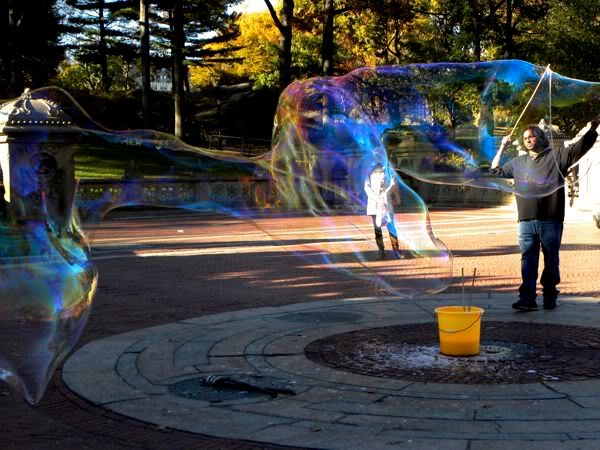The president of the New York City Police Benevolent Association, Patrick Lynch, has been publicly attacking Mayor William de Blasio over what he perceives as the mayor’s lack of support for the department. Mr. Lynch and what now appears to be a small group, having been throwing public temper tantrums since a grand jury on Staten Island refused to indict a police officer for the death of Eric Garner, a black man who died when the officer used the banned choke hold trying to arrest him for a misdemeanor. Since then the bad boys in blue have turned their backs on the mayor at the funerals for two police officers killed by a deranged man in the Brooklyn and booed him at police academy graduation ceremonies. If Mr, Lynch thinks these childish tactics gain sympathy from the public or the department’s rank and file, he is very mistaken.
In a new poll taken by Quinnipiac says that a large majority of New Yorkers disapprove of Mr. Lynch and his bullying:
New York City voters across racial lines disapprove of recent protests in which police officers turned their backs on de Blasio at the funeral of two police officers slain in the line of duty, a new Quinnipiac poll says.
Black, white and Hispanic voters disapprove of the decision by police officers to turn their backs 69 percent to 27 percent, the poll says.
New York voters of all races also disapprove of comments by police union leaders who said de Blasio had “blood on his hands” after two officers were shot and killed in Brooklyn while sitting in their patrol car in December. [..]
Voters said that those comments were “too extreme” by a margin of 77 percent to 17. The poll found that “there is no party, gender, racial, borough or age group which finds the comments ‘appropriate.'”
That’s not all. It appears that many of the PBA members are displeased with Mr. Lynch, as well:
Members of the Patrolmen’s Benevolent Association nearly came to blows on Tuesday during a meeting of delegates in Queens. There was pushing, shoving and lots of screaming at Patrick Lynch, president of the 23,000-member union. [..]
“This is what my members want!” a cop yelled near the end of the raucous meeting. “They want more cars, better vests, more manpower!”
And then the cop – one of about 350 in attendance – took a verbal jab at Lynch, who has called on de Blasio to offer a mea culpa for his continued lack of support for police.
“They don’t want an apology,” he said.
At the peak of the clash, about 100 cops were standing and screaming at Lynch, sources told the Daily News.[..]
The battle lines were clear when the meeting took an ugly turn. The Lynch supporters were generally from Manhattan and his detractors were delegates from Brooklyn and the Bronx, sources said.
New York Daily News columnist and a host of Democarcy Now!, Juan González thinks that Mr. Lynch needs to lose his job as head of the PBA for more reasons than his loud mouth and temper tantrums:
All these outbursts against de Blasio cannot obscure the fact that Lynch’s 15-year reign has been marked by bitter feuds with every mayor, by a rote defense of cops accused of unjustified use of lethal force, and by the repeated failure to win new contracts for his members except through state arbitration. [..]
Many police stationhouses in this city are in shameful disrepair, yet the PBA has done little to demand improvements.
More importantly, the union has gone five years without a contract. “Seventy-two percent of the unions settled in de Blasio’s first year and we missed the boat,” one PBA member said.
For the fourth time in the last five rounds of labor negotiations under Lynch, the PBA and the city are headed toward state arbitration. Lynch supporters say he’s gotten better raises than other city unions that way. But most labor leaders abhor arbitration because the results are generally unpredictable.
In 2008, for instance, arbitration saddled rookie cops with ridiculously low $25,000 starting pay. It took years for the PBA to undo the damage.
This time, Lynch can only hope for a two-year pact through arbitration. For thousands of cops hired since 2012, a settlement that only covers the two years before they joined the force will leave them with nothing.
The rise of New York’s police unions
By David Firestone, The Gusrdian
Many cities have experienced occasional outbreaks of the “blue flu”. Police officers get angry over a contract dispute or an argument with the mayor, and for a few days, refuse to report for work or write fewer tickets.
But only New York City has ever experienced decades of sustained militancy by its police unions – from repeated work slowdowns like the one now taking place, to riotous mass rallies and public denunciations, political campaigns, and well-funded legislative pressure. [..]
New York’s uniformed force is nearly three times as large as the next biggest force (in Chicago), giving its five police unions a far stronger voice than elsewhere. But sheer size cannot explain the outsize role the unions have long played in the police policies of the city, one almost equal to that of the police brass and city hall. [..]
Their most important ally over nearly a century has been the New York state legislature, which has used its constitutional ability to micromanage the city’s laws and finances to reward the police unions in countless ways. Those unions control a large bloc of votes, can cripple a campaign by portraying a candidate as against law and order, and take generous advantage of the state’s high political contribution limits. According to an analysis of campaign filings by the Guardian, the five police unions (one each for patrol officers, sergeants, lieutenants, detectives, and captains) have contributed more than $1.4m to the campaigns of state officials since 2010.
Even now, the unions are using their sizeable political power in Albany to try to strip the police commissioner of his ability to discipline officers for misconduct, whether it is corruption, brutality or engaging in a slowdown. In the final hours of last year’s session, both legislative chambers overwhelmingly passed a bill that would turn over all disciplinary proceedings to an arbitrator controlled by the unions.
Despite its diversity, the NYPD leans conservative and Republican. So long as the the Republicans control the New York State Senate and Governor Andrew Cuomo panders to them, the police will continue to ride rough shod over the people who pay their salaries and who they are committed to “preserve and protect.”



Recent Comments